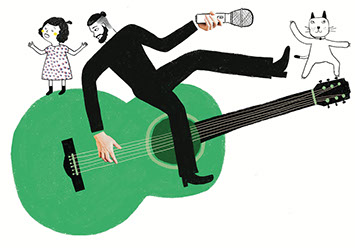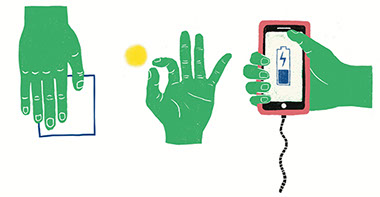
Loving
Kindness
By Chanel Tsang
Loving Kindness Meditation is a practice that comes from Buddhism. Its intention is to cultivate an attitude of benevolence and goodwill towards ourself and others by repeating short phrases like: “may you be happy” and “may you be healthy” (Young, 2016). Researchers have found that people who practiced Loving Kindness felt more positive emotions in-cluding joy, gratitude, hope, love, and pride (Fredrickson et al, 2008). The focus on others can help encourage the development of empathy for others too. (Malti, 2020b)
This is a practice that can be done at any time of the day with children and is easily built into their daily life, such as during their bedtime routine.
01
Ages 2-6
Music is a fun and natural way of learning for children: it builds their literacy and numeracy, develops their senses, and strengthens fine and gross motor skills through actions and dancing. It also stimulates the brain and helps with memory.
Here is a Loving Kindness song that I made up, set to the tune of “Frère Jacques.” Ask them to think of someone while they sing this song (better yet, look through photos of family and friends and let them choose someone to sing it to!). Have your children help make up actions to go along with the words!
Loving Kindness Song
(Sung to the tune of
“Frère Jacques”)
I hope you’re happy
I hope you’re happy
And health
And healthy
Always be safe
Always be safe
Live with ease
Live with ease

02
Ages 7-12
For older children, you can start by practicing saying Loving Kindness phrases together. You can say a line and have them repeat it.
Have them repeat the phrases, first thinking about themselves (“May I be happy…may I be healthy…”). Next, repeat the phrases again, this time thinking of someone they love. Then, repeat for someone they find hard to get along with. Finally, repeat the phrases while picturing someone neutral in their life, maybe another student they see in the school halls but they don’t play with, a neighbour you see walking their dog every day, or the school crossing guard…this can be anyone they would like to send friendly wishes to (they can also draw pictures of them and even write out the phrases).
Sample of Loving Kindness
Meditation phrases:
May you be happy
May you be healthy
May you be safe
May you live with ease
You can even get into more discussions about the phrases. For example, you can ask what they think it means to “live with ease.” They may recognize that the word ease sounds like easy, which is a good clue. However, living with ease doesn’t mean to have an easy life, but to have the skills and practice to handle what life throws at us with grace and patience. What does that look like to them? Can they remember a time when something was challenging but they were able to handle it? How did they handle it? Your discussion may lead to many different places, including highlighting their own resiliency and therefore reminding them of all the resources and tools they already have and have used successfully! Loving Kindness can be another tool in their social-emotional toolkit.
There are different Loving Kindness phrases used. You can explore them together or even have your child come up with their own.

03
Ages 12 and up
For older children and teens, why not build Loving Kindness into a routine action, like charging their phone or device? Every time they charge their device, challenge them to take a minute to sit and breathe, or practice Loving Kindness on their own. You can still practice this together or encourage them to keep a journal to record how they feel after each practice. We know that babies’ brains go through great change and growth during the first three years of life, but teenagers’ brains are growing and changing too. So, it’s a great time to nurture their mindful awareness—it can help encourage a positive change that will stay with them into adulthood.
Try it out this week! Habits and routines take time, so it may take time to make this a regular practice. If your child is not enjoying or open to this yet, you can always come back to it later. And when you do start practicing, remember that the best time to stop any activity is when they’re still having fun!

